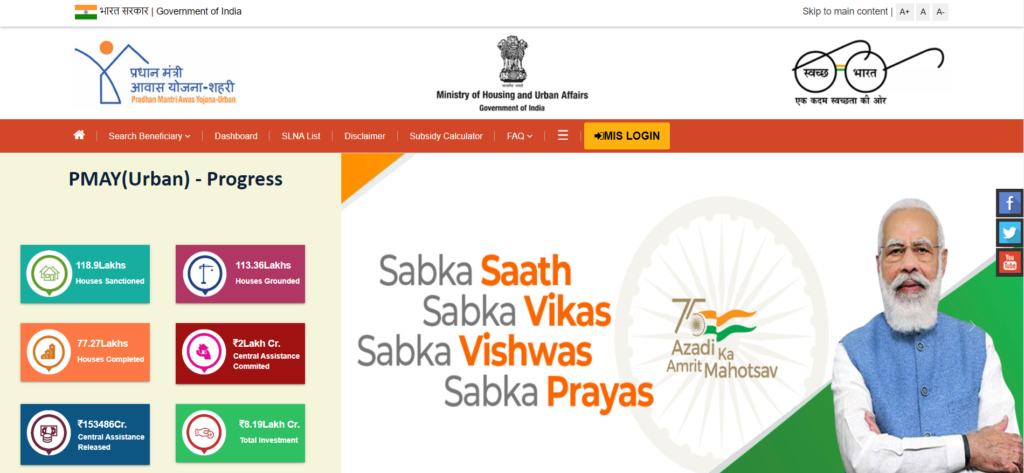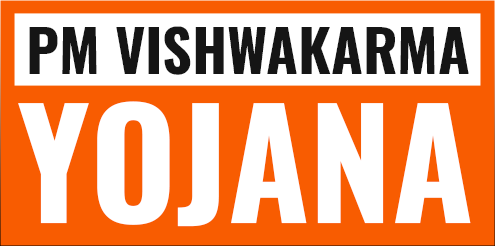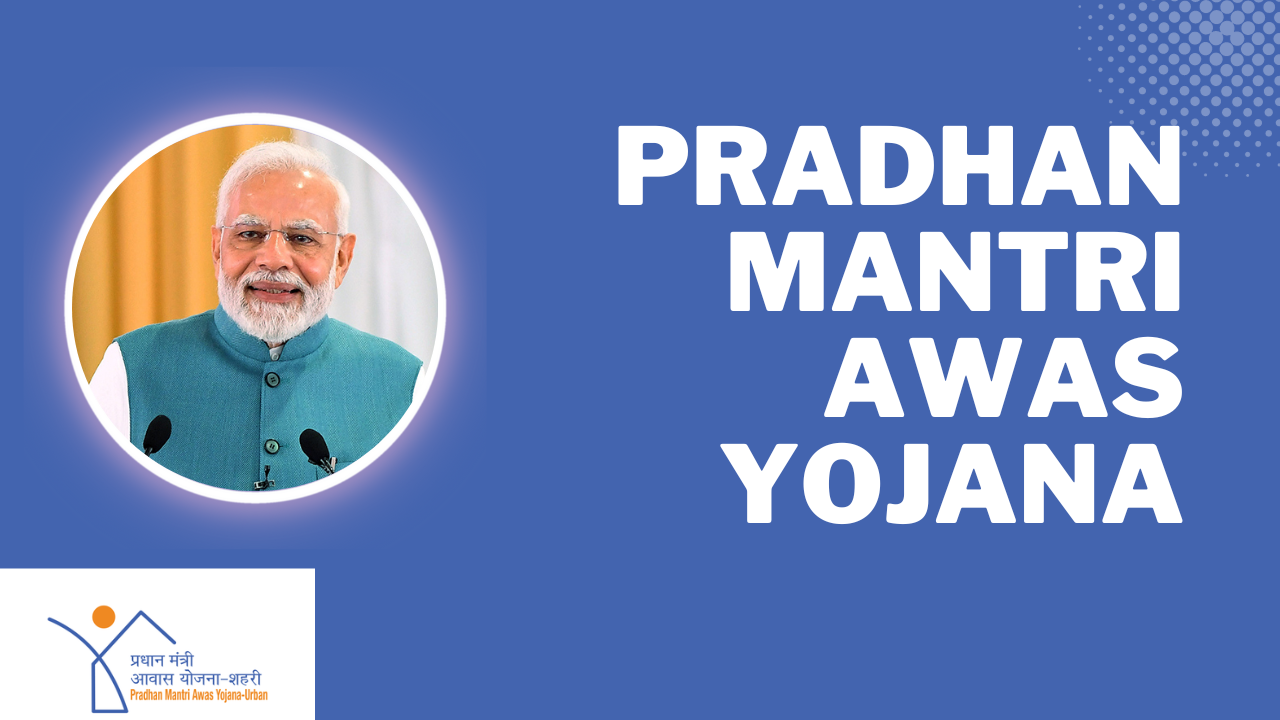Pradhan Mantri Awas Yojana
The Pradhan Mantri Awas Yojana (PMAY) is a government scheme aimed at addressing the critical issue of housing. It is for the economically disadvantaged segments of society.
It was launched by Prime Minister Narendra Modi in June 2015. This ambitious initiative has set a target of constructing 72 crore houses by 2023. This article covers the various aspects of the Pradhan Mantri Awas Yojana. It includes eligibility, application procedures, the benefits it offers, and much more. FAQs are included at the end too.

Key Features of Pradhan Mantri Awas Yojana
PMAY offers various benefits aimed at making housing affordable for urban residents in India. Here are the prominent features of the scheme:
- Subsidized Interest Rates
- Financial Assistance for Home Purchase/Construction
- Affordable Housing Units
- Inclusivity
- Empowerment of Women
- Ownership Title
- Improved Quality of Life
- Reduction in Slums
- Economic Growth
- Environmental Sustainability
- Digital Platform
- Direct Benefit Transfer (DBT)
Phases of Pradhan Mantri Awas Yojana
The Pradhan Mantri Awas Yojana is executed in three distinct phases:
- First Phase (22 June 2015 to 23 July 2018):
- The initial phase of PMAY was initiated on 22nd June 2015 and ran until 23rd July 2018.
- Second Phase (23 July 2018 to 23 August 2020):
- The second phase of PMAY began on 23rd July 2018 and concluded on 23rd August 2020.
- Third Phase (23 August 2020 to 2023):
- The ongoing third phase of PMAY commenced on 23rd August 2020 and is set to continue until 2023.
Eligibility for PM Awas Yojana
The Pradhan Mantri Awas Yojana is designed to benefit specific categories. To be eligible for this scheme, the following criteria are needed:
- The applicant should possess a Permanent Residence Certificate of India.
- The applicant or any member of their family should not own a permanent house.
- Government employees are not eligible to apply.
- Individuals with an annual income exceeding Rs 5 lakh are not eligible.
Check Out: PM SVANidhi Scheme: Empowering Street Vendors for Economic Upliftment | How to Apply?, Process GuideMajor Benefits of PM Awas Yojana
The Pradhan Mantri Awas Yojana offers a range of significant benefits, which include:
- Financial Assistance: Beneficiaries whose names appear in the PMAY list receive a substantial grant of Rs 1,20,000. It is to support house construction.
- Urban and Rural Coverage: PMAY is not limited to urban areas alone. It extends its benefits to both urban and rural populations.
The Pradhan Mantri Awas Yojana: A Transformative Initiative
Pradhan Mantri Awas Yojana represents a transformative initiative for affordable housing in India. This ambitious project aspires to create a better future for the economically weaker sections of society. It does so by providing them with safe, secure, and affordable housing.

Phase-wise Implementation of PMAY
The Pradhan Mantri Awas Yojana is being implemented in three distinct phases. Each phase focuses on achieving specific housing goals:
First Phase (22 June 2015 to 23 July 2018)
The first phase of the Pradhan Mantri Awas Yojana commenced on 22 June 2015. It marked the beginning of this monumental housing initiative. Over the years, it included the allocation of resources, planning, and the identification of eligible beneficiaries. It laid the foundation for the subsequent phases of the scheme.
Second Phase (23 July 2018 to 23 August 2020)
The second phase spans from 23rd July 2018 to 23rd August 2020. It focused on the construction and allocation of housing units to eligible recipients. During this phase, the scheme gained significant momentum. The beneficiaries began to see tangible results in the form of safe and affordable housing.
Third Phase (23 August 2020 to 2023)t
The third and ongoing phase of the Pradhan Mantri Awas Yojana is this one. The phase commenced on 23rd August 2020. It seeks to further expand the reach of the initiative. It aims to provide housing solutions to more individuals and families. Thus, contributing to the overarching goal of housing for all by 2023.
Essential Information for PMAY Application
To avail of the benefits offered by the Pradhan Mantri Awas Yojana, applicants must provide specific information and documents during the application process. These details include:
- Full Name of the Applicant
- State and District
- Village or Town Name
- Composite ID
- Aadhaar Card
- Credit Card
- Bank Passbook
- Applicant’s Aadhaar Card
- Voter Card
- Passport-Sized Photograph
Criteria for PM Awas Yojana
The Pradhan Mantri Awas Yojana extends its benefits to specific income categories. To determine eligibility, applicants must meet the following criteria:
- Economically Weaker Section (EWS): Annual household income should not exceed Rs. 3 lakh.
- Lower Income Group (LIG): Annual household income falls between Rs. 3 lakh and Rs. 6 lakh.
- Middle Income Group I (MIG I): Annual household income ranges from Rs. 6 lakh to Rs. 12 lakh.
- Middle Income Group II (MIG II): Annual household income lies between Rs. 12 lakh and Rs. 18 lakh.
| Income Category | Annual Household Income Range (Approximate) |
|---|---|
| Economically Weaker Sections (EWS) | Up to Rs. 3,00,000 |
| Lower Income Groups (LIG) | Rs. 3,00,001 to Rs. 6,00,000 |
| Middle Income Groups (MIG I) | Rs. 6,00,001 to Rs. 12,00,000 |
| Middle Income Groups (MIG II) | Rs. 12,00,001 to Rs. 18,00,000 |
Additionally, certain social categories such as Scheduled Castes (SCs), Scheduled Tribes (STs), Other Backward Classes (OBCs), and women from EWS/LIG categories are eligible. Furthermore, beneficiaries under other government housing schemes may also qualify.
Application Process for Pradhan Mantri Awas Yojana
Applying for PMAY is a straightforward process. It can be done online or offline. To participate, follow these steps:
1. Determine Eligibility:
- PMAY caters to various income groups: Economically Weaker Sections (EWS), Lower Income Groups (LIG), and Middle Income Groups (MIG).
- Ensure you meet the income criteria and do not own a pucca house anywhere in India.
2. Online Application:
- Visit the official PMAY website.
- Choose the relevant application category based on your income group.
- Enter your Aadhaar details and personal information, including income and bank account details.
- Submit the application after verifying the information for accuracy.
3. Offline Application:
- Visit a government-run Common Service Centre.
- Fill out the application form and pay a nominal fee.
- Submit the form with the required documents.
4. Track Application Status:
- You can track your application status on the PMAY website to stay updated on the progress.
5. Document Verification:
- After applying, the authorities will verify your application and documents. Be prepared to provide accurate information and necessary documentation.
6. Approval and Subsidy:
- Once your application is approved, you may become eligible for an interest subsidy on your home loan, depending on your income category.
Check Out: Dashrath Manjhi Kaushal Vikas Yojana: Free Skill Training & Job Opportunities!Pradhan Mantri Awas Yojana acknowledges the need to uplift slum dwellers and improve their living conditions. Here’s how slum dwellers can apply:
How Slum Dwellers Can Apply for Pradhan Mantri Awas Yojana
1. Visit the PMAY Website
2. Choose the “For Slum Dwellers” Option:
- Select the “For Slum Dwellers” category from the “Citizen Assessment” dropdown menu.
3. Provide Aadhaar Details:
4. Fill Out Required Information:
- Input accurate personal details, including your name, address, and employment information.
5. Submit the Form:
- Complete the form, enter the captcha code, and click “Submit.”
Applying as a slum dweller allows you to access housing assistance under the In-Situ Slum Redevelopment (ISSR) component of PMAY. It focuses on improving existing slums.
Key Benefits of PMAY
The Pradhan Mantri Awas Yojana offers a multitude of advantages, including:
Financial Assistance: Citizens whose names appear in the beneficiary list receive a substantial grant of Rs 1,20,000 for house construction. This financial aid serves as a crucial stepping stone towards achieving homeownership.
Urban and Rural Reach: PMAY aims to bridge the gap between urban and rural housing disparities. It extends its benefits to both urban and rural areas, ensuring that people from various backgrounds can access safe and affordable housing.
Rules of Pradhan Mantri Awas Yojana
Understanding the rules and eligibility criteria is crucial when applying for PMAY:
1. Income Criteria:
- Eligibility is categorized based on income levels: EWS, LIG, MIG I, and MIG II.
- Ensure your annual household income falls within the prescribed range.
2. Property Ownership:
- Beneficiaries or their family members must not own a pucca house anywhere in India to qualify for PMAY.
3. Location:
- PMAY has both urban and rural components, with different rules for each.
- The location of the property can impact eligibility and benefits.
4. Carpet Area Limit:
- The carpet area of the house you’re purchasing or constructing should adhere to the defined limits based on your income category.
5. Co-Ownership:
- Married couples can apply for PMAY together to avail of the subsidy if they meet the eligibility criteria.
6. Aadhaar Linkage:
- Having a valid Aadhaar card is mandatory for PMAY application.
By adhering to these rules and eligibility criteria, you can ensure that your PMAY application is in line with the program’s requirements.
Conclusion
The Pradhan Mantri Awas Yojana stands is the government’s commitment to addressing housing-related challenges. It is specially for the economically disadvantaged.
The initiative is supposed to uplift the quality of life for countless individuals and families across India. With its three distinct phases and a robust eligibility framework, PMAY has the goal of “Housing for All” by 2023.
FAQ about Pradhan Mantri Awas Yojana (PMAY):
Q1. What is Pradhan Mantri Awas Yojana (PMAY)?
Pradhan Mantri Awas Yojana (PMAY) is a government housing scheme initiated in 2015 to offer affordable housing to Indian citizens.
Q2. Who is eligible to apply for PMAY?
PMAY is open to individuals and families from Economically Weaker Sections (EWS), Lower Income Groups (LIG), and Middle-Income Groups (MIG) who don’t own a pucca (permanent) house.
Q3. What are the benefits of PMAY?
PMAY offers benefits such as subsidized interest rates, financial assistance for home purchase/construction, and improved quality of life.
Q4. How can slum dwellers apply for PMAY?
Slum dwellers can apply for PMAY by visiting the official PMAY website, selecting the “For Slum Dwellers” category, and providing their Aadhaar details.
Q5. Are there any rules and eligibility criteria for PMAY?
Yes, PMAY has specific income criteria, property ownership, location, and co-ownership rules, which vary based on income categories and other factors.
Q6. Can married couples apply together for PMAY?
Yes, married couples can apply for PMAY together if they meet the eligibility criteria.
Q7. What is the procedure for tracking the PMAY application status?
Applicants can track their PMAY application status on the official PMAY website by selecting the “Track your Assessment Status” option.
Q8. What documents are required for the PMAY application?
Commonly required documents for PMAY application include an Aadhaar card, voter card, passport-sized photos, and bank-related documents.
Q9. How does PMAY aim to improve housing sustainability?
PMAY promotes environmentally sustainable practices in housing construction, focusing on energy efficiency and reduced carbon footprint.
Q10. Is PMAY available in rural areas as well?
Yes, PMAY has an urban component (PMAY-Urban) and a rural component (PMAY-Gramin) to provide housing solutions in both urban and rural areas.


3 thoughts on “Pradhan Mantri Awas Yojana List: Transforming Lives Through Affordable Housing”